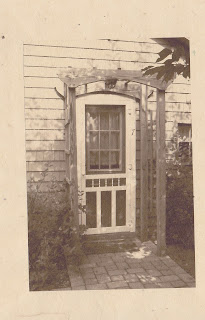Summer rarely hangs on
until the last day here in southern New England. Fall is in the air usually a good week before the official autumnal equinox
. The same is true this year. Since last Friday, the temperatures have been in the mid 60's F and cooler at night. The sun has set by 7 p.m. The leaves are beginning to change color and some are even beginning to fall.
Yes, the sunny, warm, seemingly endless days of summer have come to an end. I really enjoyed this summer. I will miss it, but I also look forward to the days of transition ahead. Transitioning from shorts to jeans; from sandals to socks and closed shoes; from wet hair to blow dried; from whites, yellows and bright greens of summer home decor to rusts, browns and dark greens of autumn; from margaritas to apple cider, cinnamon and bourbon; from papermaking to printmaking.
I am once again taking the
Monotype/Monoprint class at Creative Arts Workshop. I start this evening. I am going to build on what I started in the summer class and start new projects as well. Today I am working on a simple design of wildflowers that I will cut from linoleum and use primarily as a background. I am planning to do a series of prints featuring wildflowers on the naturally dyed cotton paper I made. If I can figure out how to thicken the ink I made from
Viburnum acerifolium berries and
Salvia officinalis, I will use these as well. If not, I have other projects in mind for those.
 |
| Design on "wonder-cut" linoleum before carving |


